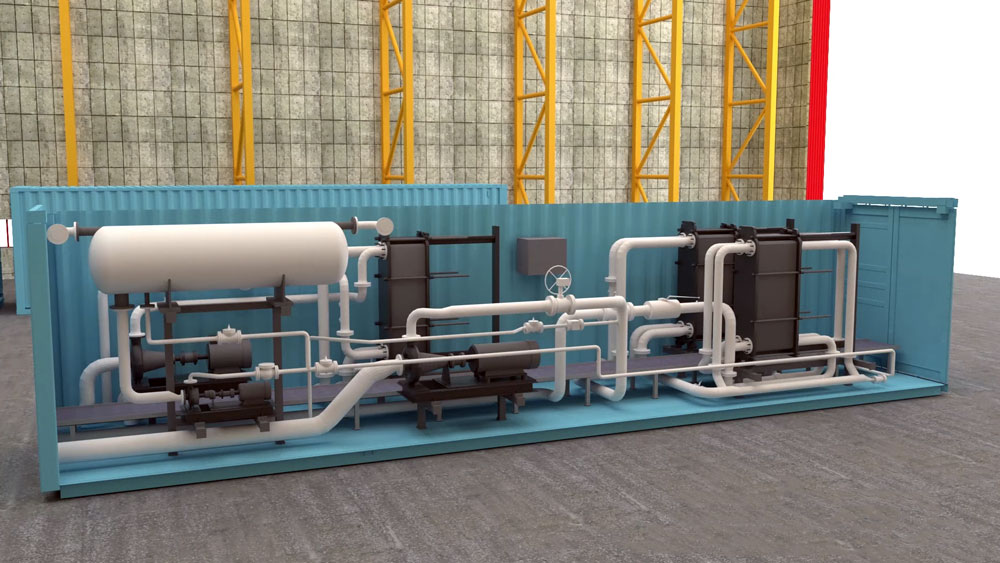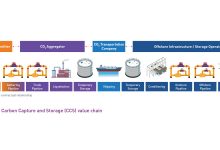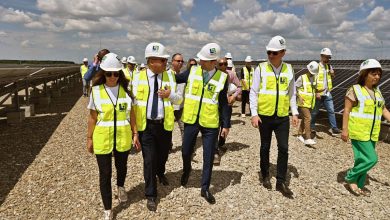Aker Solutions signs carbon capture contract with Twence in the Netherlands
Aker Solutions has signed an agreement for delivery of carbon capture and liquefaction at Twence’s waste-to-energy plant in Hengelo in the Netherlands.
The solution that will capture Twence’s CO2 emissions is called Just Catch, a modular carbon capture system developed by Aker Solutions to be as simple, low-cost and environmentally friendly as possible.
Twence converts 1 million tons of waste to energy every year, from households and other sources. A majority of the waste comes from bio materials. To contribute to the Netherlands’ progress towards the goals set in the Paris climate agreement in 2015, Twence ran a public procurement process to find a carbon capture, utilization and storage (CCUS) provider. Major determining factors for winning the competition were price, time to implement and environmental attributes. Aker Solutions has gained the experience necessary to meet these requirements through a long-term commitment to CCUS.
Trusted technology
“To eliminate our impact on the environment, we needed an easy, inexpensive and time-efficient solution to capture the carbon we produce,” said Dr. Marc Kapteijn, managing director of Twence. “We also needed to be able to trust the technology and process to be as environmentally friendly, robust and effective as possible. Just Catch satisfies all our requirements.”
“Twence’s confidence in us proves that we are producing an attractive solution for the market,” said Luis Araujo, chief executive officer of Aker Solutions. “We have focused on cutting costs and simplifying CCUS technology. Our goal is to make carbon capture accessible and affordable. CCUS is one of the three main pillars in Aker Solutions’ decarbonization strategy. The other two are decarbonization of oil and gas facilities and offshore floating wind.”
Aker Solutions has previously gained one-year operational data collection and experience from carbon capture at a waste to energy plant similar to Twence. The Just Catch and liquefaction plant at Twence’s facilities has a capacity of 100,000 tons of CO2 per annum (TPA) and is planned to be in operation by 2021. Once the CO2 is captured and liquefied, it will be supplied by road tankers to users such as nearby greenhouses, where it will increase the yields of plants and vegetables. This supply replaces emissions from the traditional method of producing CO2 for greenhouses: burning fossil fuels.
Standardized modules
Just Catch is standardized and can be delivered in several different sizes, ranging currently from 10,000 to 100,000 TPA. Just Catch can therefore meet the needs of different-sized operations, for example waste-to-energy, fossil power plants or cement factories. It will help customers realize their carbon capture ambitions with predictable costs, implementation time and physical footprint. Once the system is fabricated, Aker Solutions can deliver the four process container modules by trucks, in a single shipment.
“Aker Solutions was part of the world’s first large-scale carbon capture and storage project in 1996, at the Sleipner field offshore Norway,” said Oscar Graff, vice president and head of CCUS at Aker Solutions. “During the last couple of years, we have seen a significant uptake in the interest from several market segments and we are now engaged in numerous tenders and projects globally. One of them being the CCS FEED for the Norcem cement factory in Norway that develops a large 400,000 TPA capture and liquefaction facility for permanent CO2 storage.”
“In parallel, we have developed Just Catch, an innovative standardized and modular product that is winning international CCUS bids,” said Graff. “Our engineers have made a ground-breaking job in the development of Just Catch. It has reduced the capture plant footprint by about 90 percent and thereby reduced the cost of materials and fabrication significantly. With our proprietary technology and solvent which absorbs the CO2 from the flue gas, we have the most efficient, robust and environmentally friendly CCUS technology on the market.”







